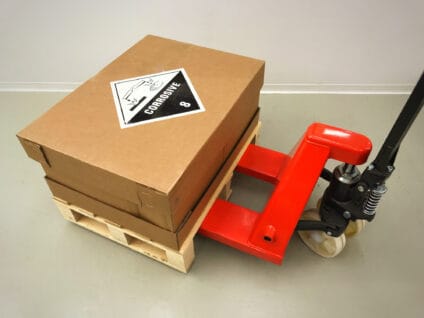5 Crucial Tips for Safely Storing Hazardous Materials

According to the United Nations, exposure to hazardous materials killed two workers every minute in 2018. Many of those same materials may be in storage at your workplace.
But there are ways of minimizing the risk of harm from even the most toxic items. We won’t go into extensive detail on the technical aspects of shelving each type of material. Instead, we’ll give you an overview of five primary standards you want to maintain to keep your employees safe around all hazardous material storage.
Limit Access and Provide Training
The safety of hazardous materials has much to do with who handles them. A primary step is to limit the number of employees allowed to enter the area where you store your hazardous materials. Restrict access using digital and physical barriers. And keep strict watch over the list of workers with permission to enter the area.
Proper training is mandatory for employees who will work with or near hazardous materials. They should know what’s in inventory, why it’s there, and what risks it poses. They should also be aware of how they should safely handle each item.
Use Appropriate Storage Units
Are your storage facilities suitable for the material you’re storing? A case in point, you may have recently added flammable items to your inventory. However, your storage unit is not flame-resistant.
Do your hazardous materials require a specific amount of ventilation? Will the flooring survive and contain a spill?
A company can begin with a well-thought-out storage strategy but later stray from the plan. Be careful that workers don’t become lax regarding where they store newer items. A shortage of space is no reason to keep things that are only suitable for one type of storage unit in a different and less-than-ideal location.
Label and Document Items Accurately
All items should carry clear, easy-to-read labels that are computer printed. You don’t want to rely on handwritten lettering that’s open to the interpretation of the reader. The idea is to eliminate ambiguity.
Likewise, you want to keep your safety data sheets up-to-date, easily readable, and readily available. You need a data form for each material.
Try using our HazMat Inventory app. Your employees will have a complete inventory of all your materials at their fingertips.
Our app also converts measurements so that you never accidentally store more material than allowed. The app even helps you keep particular track of materials that require regulatory reporting, saving you time and money.
Stay Within Your Allotted Capacity
Even a well-constructed storage space can become dangerous when overstocked. That’s why the rules for storing liquefied hydrogen differ depending on the amount and the type of storage area. So, never assume that the hazmat storage amount remains the same for a material when you relocate it. Verify with OSHA.
Don’t Store Incompatible Items Together
Sometimes a firewall is necessary between the items. At other times, it’s much safer to keep them in independent storage facilities.
An example of incompatible items is acid and hypochlorite. Together, they form the deadly gas chlorine.
Get Help With Your Hazardous Material Storage
Don’t struggle to get your safety data sheets under control. Rely on our experience of over 35 years of assisting companies to meet hazardous material storage requirements.
Helping businesses keep track of their data safety data sheets is our specialty. Contact us today to discuss how we can bring modern SDS management to your organization.
